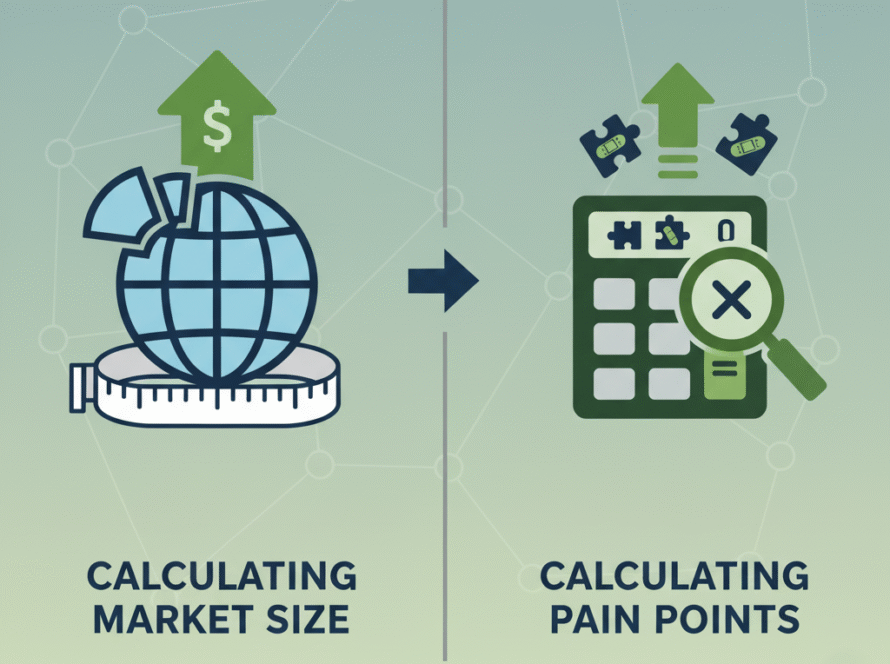In the mid-1990s, two engineers in New Jersey founded a company specializing in telecom and network software at a time when the internet was just beginning to shape global business. As the dot-com collapse hit in 2001, they decided to pivot toward software solutions serving the growing ecosystem of startups.
By 2005, the company released a CRM product and decided to change their name to better position themselves in front of their target audience that they referred to as the ‘small office, home office segment’. The team decided on the name SOHO – an abbreviation reflecting their target audience, only to find that the domain was unavailable.
With a slight tweak for uniqueness and memorability, they chose Zoho.com, a name that retained the spirit of small business empowerment, now an integrated ecosystem of more than 55 apps with over 100 million users worldwide from Fortune 500 companies to even the Indian government.
Today Zoho stands as one of the world’s largest bootstrapped tech companies, with a name that continues to capture the essence of their business – democratizing software for every business, big or small.
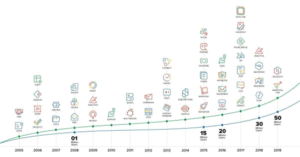
Naming 101: The Framework
Choosing a brand name is one of the highest-stakes decisions a new venture can make; it’s a strategic asset for building trust and creating a long-term competitive advantage. In today’s landscape of “trademark clutter” and global commerce, a singular idea or concept is insufficient. To navigate these challenges, an effective naming process relies on several core principles:
- Sound Symbolism A name’s phonetics evoke specific responses and can be engineered to build trust. Hard consonants (like K, T, P) can project strength and precision, while softer sounds (L, M, S) often convey smoothness This is about defining a desired sonic attribute to ensure the name feels like the brand.
- Accessibility and Cognitive Fluency A name must be accessible and easy for the human brain to process, as complexity creates friction in word-of-mouth marketing. Simple one or two-syllable names are easier to recall, but “cognitive fluency” can also be achieved in invented names by using familiar components.
- Market Distinctiveness The name must have distinctiveness to stand out. While generic names blend in, this uniqueness must be balanced with relevance to avoid confusing your target audience.
- Legal and Digital Viability A name must pass a foundational viability check. This is a non-negotiable step requiring a rigorous screening to ensure it is trademarkable and has an available domain, as a name that can’t be owned online faces immediate limitations.
- Global Brand Safety Cultural and linguistic screening is critical for global ambitions. A name must be vetted to work across languages to prevent negative, nonsensical, or unintended meanings.
In a recent episode of Lenny’s Newsletter, David Placek of Lexicon Branding who has worked on naming over 4000 marquee brands such as Azure, Pentium, BlackBerry, Impossible Foods etc. talks about the Diamond Framework to develop clarity on the business, marketing, and naming objectives by asking four key questions to define the name’s role:
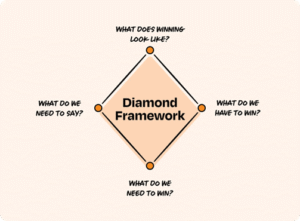
- What does winning look like? (ultimate business objective and the desired market outcome – can be defined as either a category creator/market creator/market owner)
- What do we have to win? (core value proposition of the product or service itself that must be delivered to the customer to make the vision in step 1 a reality)
- What do we need to win? (non-negotiable “must-believe” for the customer and often clarifies what the brand must not be perceived as to protect its value)
- What do we need to say? (core narrative the brand will use, balancing the objective benefits with the subjective preference that will resonate with the audience adoption.
Global and Indian Brand Case Studies
Successful brands demonstrate how thoughtful naming decisions align with business strategy. Amazon was nearly called “Cadabra” but then pivoted to evoke the world’s largest river, signaling scale. Apple humanized technology with a familiar, non-technical word and Coca-Cola uses phonetic repetition (“C” sounds) for memorability.
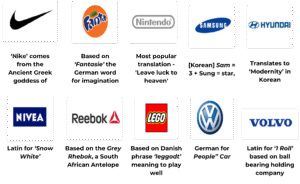
Global Brand Names and their meaning: Source
In India, Zomato evolved from “Foodiebay” to a contemporary twist on “tomato” and now to Eternal reflecting the brand’s maturation from a food listing site to a comprehensive platform, and Paytm (Pay Through Mobile) built trust with a name phonetically similar to ‘ATM’.
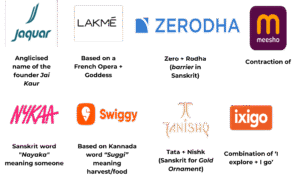
Spotlight: Auxano and Portfolio
Auxano from the Greek word for “enable growth.” This reflects our core philosophy of not just providing capital but actively enabling portfolio companies to scale, which positions us as a partner in growth rather than a passive investor.
Likewise, within the portfolio, naming strategies vary based on business models and target audiences:

Takeaway
A name helps shape the path a brand takes. The best names work on multiple levels: they are phonetically appealing, easy to remember, legally defensible, and meaningful within their context.
While a poor name can be overcome with exceptional execution and significant investment, a strong name reduces friction from the start. It aids memorability, facilitates word-of-mouth, and carries the weight of brand identity as the business scales. This implies
- For founders building new ventures, the naming process deserves deliberate attention.
- For established brands, periodic evaluation ensures the name continues to serve the evolved business.
In the end, great brands are indeed built on great names but only when those names are backed by substance, execution, and a clear sense of purpose.
Author
Aditya Golani


